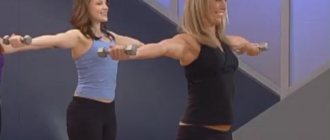Who is suitable for stair running?
This sport has a huge number of fans. Moreover, the range of target audiences is very different.
- Professional and amateur athletes use stair running as an effective way to prepare for a new load. Stair training helps train your body for trail running. This is running on natural terrain. Trail running requires climbing skills. To do this, you need to practice the correct positioning of your legs and pump up your muscles. The same goes for skyrunning and vertical runs. Running climbs are a completely different load on the body when compared to regular running.
- Road runners use stair running to develop muscle strength, endurance, and coordination. Below we will take a closer look at the effect of such a load.
- People who do not have alternative places to run choose stairs. For example, young mothers with a baby sleeping at home. Or residents of a village where there is no gym, running area, or convenient track.
- Running up stairs is often used for weight loss. However, given the high intensity of such training, there are some important features. Let's look at them separately below.
This activity is a useful type of sports activity. However, people with chronic diseases should consult their doctor first. Special attention is required: varicose veins, arthritis, previous injuries, strokes/heart attacks, arrhythmias.
Walking on stairs: benefits and harms. Orthopedist interview
“If you want beautiful, strong and slender legs, run up the stairs,” my neighbor Elena convinced me about 15 years ago. — Going to the gym is expensive, it’s cold outside, but the entrance is dry and warm. Five floors up and down in two approaches - that's your workout.
She herself easily flew up every morning, I could not keep up with her. But then something terrible happened: Lena was injured and took a long time to recover. The running was over.
“It’s good to go up the stairs,” the neighbor justified herself, “but on the way down, trouble can happen.”
Is it a myth or reality, I decided to find out from our expert - orthopedic surgeon Igor Vladimirovich Kitaev.
— Igor Vladimirovich, tell me, is it true that going up stairs is useful, but going down is harmful?
“Movements up and down the stairs are familiar to people, and it is impossible to say which of them is useful and which is harmful. What plays a role here is not the direction of movement, but the correct positioning of the leg, the transfer of the body and the sharpness of the execution. In both cases, a meniscus or ligament rupture may occur. How does this happen? They placed their leg sharply and quickly transferred the weight of their torso onto it, while the body leaned to the side due to carelessness. This is already a trauma! The eye may fail, the leg accidentally stands not in the center of the body, roughly speaking, but to the right or to the left, and the axis of the leg should always be parallel to the movement of the body. Rarely running up 2-3 steps can also provoke such situations. It happens that after training a person is full of energy, his muscles are pumped up, it’s easy to move, and he casually flies up the stairs! And then there’s an unforeseen situation... a rupture due to an incorrect load at the wrong angle. When moving downwards there are several other factors. When moving your leg down, you need to make sure that the other leg that remains higher does not change its angle relative to the body. Otherwise, a rupture of the lateral ligaments or meniscus may occur.
— It turns out that only athletes can run up the stairs?
— There is no need to run, but people with healthy knee joints can walk to tone their muscles. Those who have bad knees need to be very careful. It's better to take the elevator. Carefully - in the elevator. You need to take care of your knees! And even with minor symptoms, consult a doctor.
— What are minor symptoms?
- Symptoms that do not cause much trouble, but may indicate wear and tear of the cartilage, changes in the structure. It’s better to play it safe and not cause terrible pain.
1. Discomfort in the legs at the end of the day.
2. Heaviness in the knees.
3. Crunching when squatting or bending the knees.
4. Reaction to weather changes.
5. Nagging pain in the knees.
Features of training on stairs
How is running up stairs so different from other running workouts? Let's look at the pros/cons separately.
Advantages
Effect on the body
During such a run, the muscular-ligamentous system is loaded much more heavily. The quadriceps femoris, calf group, and foot stabilizer muscles are especially involved. On the stairs, a person can perform special plyometric exercises to maximize muscle load. For example, jumping with one leg; frog jumping.
The increased load allows for greater development of the respiratory and cardiovascular systems. Therefore, running up stairs increases the aerobic glucose breakdown threshold (AGT). This means that you will be able to run harder, longer, within the aerobic range.
According to the British journal Sport Medicine, short stair runs 5 times a week increase maximum oxygen consumption by 17% in just 2 months.
The pulse decreases - the heart works more economically. This training develops a network of collateral vessels and stimulates the acceleration of metabolic processes. Maximum benefit for the same jogging time!
Result
High-intensity running up the stairs will allow you to achieve results faster. Be it losing weight, strengthening muscles, increasing endurance or developing “breathing ability”.
Download training plans to prepare for the marathon and half marathon.
Start preparing right now!
However, this does not mean that you need to exhaust yourself. Below you will find a sample training plan that will allow you to achieve results without harm to your body.
Availability
As we already said, there are stairs everywhere! In any city park, entrance, near government institutions. There is no need to buy a subscription, travel far, or look for a route. The lesson will be held locally and very productive.
Flaws
Beginners
An intensive training program is not suitable for an unprepared body. Running up stairs is a high level of exercise. Beginners need to start with the minimum.
If you immediately start running, your breathing will become irregular, your pulse will rise above the permissible norm, and your muscles will immediately “clog.”
There is a way out - beginners are advised to walk at a calm pace. As soon as the body adapts, move on to the walking/running combination.
Contraindications
People with arthrosis, arthritis, and vasculitis should take into account the greater load on the joints. It is prohibited to engage in this type of sport during an exacerbation period.
In diabetes mellitus, hypoglycemia may occur. But slow walking is even beneficial.
Considering that overweight people are recommended to run up stairs to lose weight, it is important to remember the restrictions. With a BMI (body mass index) above 30, such exercise is prohibited. Otherwise, the joints will be injured.
Cardiovascular, endocrine diseases, vascular pathologies, and previous injuries require consultation with a doctor.
Traumaticity
It's not just improper technique that can cause injury. Before you start jogging, it is important to examine the integrity of the steps. The distance between them should be the same. Avoid pits, holes, cracks. The leg may slip, become twisted, or be injured during a fall. Safety first!
Running up stairs for weight loss
I want to get rid of excess weight as quickly as possible. Therefore, running up the stairs for weight loss is attractive due to its effectiveness.
If you are overweight, your joints will be subject to much more stress. After just a few workouts, pain and signs of inflammation may occur (swelling, redness, local increase in skin temperature).
A gradual increase in load will help to avoid such complications. Start by walking.
Even before walking, your joints must be prepared! A regular warm-up will help.
The main question is what effect to expect?
There are no universal numbers, because how many calories running up the stairs burns depends on your metabolic rate, duration and intensity of exercise. Fat begins to be burned faster than during jogging (after 20-30 minutes).
Approximately, when you have already moved from walking to running, after 20 minutes of exercise, 10-15 kcal/minute is burned.
Regular training will give excellent results!
Where can you run up the stairs?
Many athletes prefer stadium steps, but don't despair if you don't have those facilities. You can always use the stairs in your apartment building. If you want to run on stairs, but are not ready for such a load right away, start with training on hilly terrain, gradually increasing the steepness of the climb. This will make it easier for you to get used to and adapt to the nature of the load.
An alternative option could be an ellipse or a stair climbing machine. Such a simulator does not take up much space, but is not inferior in effectiveness to outdoor training.
Walking up the stairs
It seems - what could be easier than walking up the steps? However, almost all of us do it wrong.
The walking technique is as follows: keep your body straight, bend your elbows slightly below your chest. No matter how much you want to look at your feet, keep your head straight! Place your foot halfway on the steps to relieve pressure on your heel.
Move at a pace that allows you to breathe evenly while speaking freely.
Training plan
How to properly increase the intensity of your training so that running up stairs is effective?
Our table will help you.
| A week | Frequency | Duration | Load |
| 1 | 1-2 times/week: | 10-15 minutes | General developmental exercise (the table below is a list) Walking up the stairs |
| 2 | 2-3 times/week: | 20-25 minutes | General developmental exercises Walking, turning into slow running |
| 3 | 3-4 times/week: | 30-35 minutes | General developmental exercises Running + strength exercises (squats, squat jumps) |
| 4 | 4-5 times/week | more than 40 minutes | General strengthening exercises Interval running (medium pace + high pace) |
General strengthening exercises are performed on one flight (+/- 10 steps)
- Running up the stairs, landing on each step;
- Landing through one step;
- Climbing (running or walking) through 2 steps with quadriceps tension and a relaxed foot;
- Running sideways (left, right) landing on each step;
- Jumping with two legs;
- Jumping with both legs (toad position);
- Running up the steps in a zigzag pattern;
- “Skater exercise” - jumping in different directions of steps;
- Lunges forward through 2 steps with fixation of body position.
WHY DO RUNNERS BENEFIT FROM STAIRS TRAINING? WHAT MAKES THESE TYPES OF TRAINING IMPROVE?
Stair training develops skills that are not found in solo running. Running is a limited movement that does not, in and of itself, increase an athlete's force production or the skill set needed to improve running.
Stair training falls under the category of plyometrics or neuromuscular training. These types of programs have demonstrated excellent results, including decreased injury rates, increased speed and agility, improved vertical jump, and improved ground contact time.









